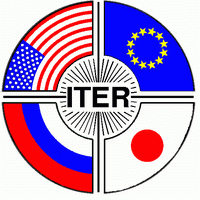Alternative energy source, originally proposed by the USSR, to be built in France
Once the construction of the thermonuclear reactor is finished, it will be able to supply a half of Europe with electric power
The ambitious project of the International Thermonuclear Experimental Reactor (ITER) has finally moved from the dead point. World's leading powers participating in the project finally agreed to build the reactor in France, which eventually won the right to house the reactor in the competition against Japan. 
Japan had to give up the idea of building the reactor on its territory on account of economic difficulties. The terms stipulate that the country, which wins the right for the construction of the thermonuclear reactor on its territory, would have to cover 40 percent of the reactor's cost.
The project is estimated at the total of $13 billion. The hosting state would thus have to invest $6-8 billion. Other members of the project – China, Russia, the USA, South Korea and Japan – will invest 10 percent of the cost each.
It is noteworthy that in addition to heavy costs, the project promises to bring considerable advantages to France. The construction of the reactor is to bring some 2,400 new jobs; over 3,000 vacancies will appear during the operation of the reactor, which will last until 2035, RIA Novosti reports. The thermonuclear reactor will be built in France, Alpes de Haute Provence, from 2005 to 2015.
French Prime Minister Dominique de Villepin expressed his gratitude to the partners for confidence, which France was honored to receive. The premier said that the implementation of the project would let France create 4,000 new jobs: it is a very important factor, which will make for the development of the nation's research potential.
Russia's role in the grand project makes up about ten percent. About 200 Russian enterprises and organizations will be contracted for the project of the thermonuclear reactor.
The scientific research within the ITER project was funded in Russia at the expense of the ITER federal target program, which is about to be completed during the current year. However, the Russian Ministry for Economic Development and Trade suggested the funding of the program should be stopped along with the funding of other programs, which the ministry considered ineffective.
Spokespeople for the Russian Agency for Nuclear Power hope that the question about the budgetary funding of the program will be solved after an adequate intergovernmental agreement is signed. The press secretary of the Russian Ministry for Finances, Gennady Yezhov, stated two days ago that the ministry would provide a separate expenditure clause in the budget for the funding of the ITER, if the agreement is signed. The Russian Agency for Nuclear Power would cover a part of the costs anyway.
The perspectives of the controlled thermonuclear power in the energy industry are obvious to everyone. Scientists differ in their opinions only in terms of the time, within which a practical result can be received. Some of them think that it will be possible to achieve a result during the forthcoming decade, whereas others believe that the thermonuclear reactor will bring its good to the next generation of humans only.
In the future, ITER may become the prototype of thermonuclear power plants, which will become a source of cheap energy. It is worth mentioning that this energy will not be dependant on natural resources at all. “Unlike a nuclear reactor, a thermonuclear reactor cannot explode. Furthermore, it does not pose any threat to the natural environment either,” the leading specialist of the ITER project in the Russian Agency for Nuclear Power, Vitaly Korzhavin, told the Vedomosti newspaper.
It was the USSR, which set forth the revolutionary project to harness the thermonuclear power to the international community in 1985. The Soviet Union attracted most outstanding specialists of thermonuclear studies to work on the project. The project of the International Thermonuclear Experimental Reactor was officially launched in 1986 under the aegis of IAEA.
The USA lost its interest in the ITER in 1998. However, when the Bush's administration became extremely concerned about the future of the nation's energy security, the USA joined the project again. China followed the example of the States as well.
It will take specialists seven years to build the reactor, which is expected to launch the source of alternative energy. Once the construction is completed, the output of the reactor will be enough to supply a half of Europe with electric power. The members of the project hope that the reactor will be put into operation immediately after the end of the trial tests.
Subscribe to Pravda.Ru Telegram channel, Facebook, RSS!




